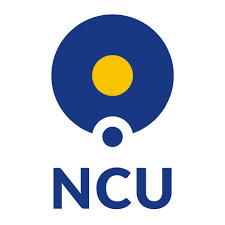Perspectives on pantomime: evolution, development, interaction
Collegium Maius, room 307, Fosa Staromiejska 3
In current language evolution research, the importance of pantomime is highlighted in several highly influential accounts of language origins, such Donald’s theory of mimesis (1991, 2001), Arbib’s Mirror System Hypothesis (Arbib 2005, 2012, 2016, Arbib et al., 2018) and Tomasello’s (2008) proposal that language was bootstrapped by two types of “natural human gesture” – pointing and pantomiming. These contributions galvanized research into pantomime, which was conducted from a broad interdisciplinary perspective characteristic of modern language origins. The idea for this workshop is to present the state-of-the-art of the research on pantomime that grows out of contemporary language origins research.
This research involves definitional and conceptual analysis (e.g. Abramova 2018, Żywiczyński et al. 2018, Wacewicz & Żywiczyński 2021), theoretical works dedicated to the study of specific problems (e.g. the neural infrastructure of pantomimic communication; Arbib 2018), the role of bodily-visual communication in the evolution of pedagogy (Gärdenfors 2017) and narration (Ferretti et al. 2017), or the semiotic status of pantomime (Zlatev et al. 2020). We have also seen a growing number of empirical studies, devoted to a range of problems and using various methodologies. There have been experimental-semiotic studies (e.g. Zlatev et al. 2017, Boruta-Żywiczyńska and Placiński 2020), also including cross-cultural studies (Żywiczyński et al. submitted), studies with children (Lister et al. 2020) and special populations (e.g. people with autism: Adornetti et al. 2019; or with apraxia: Buxbaum et al. 2014). Pantomime has also been studied by means of naturalistic observation in the context of emerging sign languages (Sandler 2012, Mineiro et al. 2017), language acquisition (Marentette et al. 2020), and pantomime-like behaviours of nonhuman apes (Russon 2018).
The seminar brings together the broad interdisciplinary research on pantomime, including the following topics:
- pantomime as an evolutionary precursor of language
- pantomime as a distinct form of bodily-visual communication (e.g. distinct from gesture in the narrow sense, McNeill 1992, 2012), and hence pantomimic conceptions of language origin are distinct both from gesture-first and gesture-plus-speech theories (e.g. Hewes 1973, Armstrong et al. 1995, Corballis 2012; see Wacewicz and Żywiczyński 2021 for the explication of these differences)
- the investigation of pantomime in modern humans as providing insights on earlier, bootstrapping stages of language evolution (Żywiczyński et al. 2021)
- pantomime as a communicative system used by modern humans, which is important for the understanding of modern human communication and cognition (see e.g. Marentette et al. 2020).
Programme
| Thursday, Nov 18 | Friday, Nov 19 | |
|---|---|---|
| 09.45-10.00 | Introduction | |
| 10:00–11:00 | Michael Arbib | Wacewicz & Żywiczyński |
| 11:00–12:00 | Ana Mineiro | Cornelia Müller |
| 12:00–13:00 | Lunch | Lunch |
| 13:00–14:00 | Jordan Zlatev | Peter Gärdenfors |
| 14:00–15:00 | Francesco Ferretti | Marta Sibierska et al. |
| 15:00–15:30 | Coffe break | Coffe break |
| 15:30–16:30 | Anne Russon | Steven Brown |
| 16:30–17:30 | Laurel Buxbaum | Paula Marentette |
| 17:30–17:45 | Break | Break |
| 17:45–18:30 | Round table |
Wednesday, Nov 17
KICK-OFF MEETING
DAY ONE: Thursday, Nov 18
Michael Arbib
Pantomime’s partially parting paths
Ana Mineiro
What pantomime can tell us about emergent signs of a newborn language
Jordan Zlatev, Marta Sibierska and Przemyslaw Żywiczyński
Pantomime and the origins of narrative
Francesco Ferretti, Ines Adornetti and Alessandra Chiera
Narrative pantomime and the origins of language
Anne E. Russon
Pantomime in great apes and other non-human primates: qualities and prevalence
Laurel J. Buxbaum
Shared and distinct neurocognitive processes in language and tool use actions: evidence from stroke lesion studies
Round table: Defining pantomime
Panellists: Michael Arbib, Ana Mineiro, Jordan Zlatev
DINNER
DAY TWO: Friday, Nov 19
Sławomir Wacewicz and Przemysław Żywiczyński
Through pantomime to language – from transparency to efficiency
Cornelia Müller
Miming as „as-if” action. Thinking and acting by hand
Peter Gärdenfors
The role of pantomime in teaching
Marta Sibierska, Przemysław Żywiczyński, Sławomir Wacewicz and Monika Boruta
What’s in a mime? How formal features of pantomime influence its communicative success: an exploratory analysis
Steven Brown
The pantomimic origins of the narrative arts
Paula Marentette
Pantomime use in children: Symbolic or pragmatic?
PUBLICATION
A post-conference volume will be published by John Benjamins in the series Topics in Interaction Studies https://www.jbe-platform.com/content/journals/15720381
A contribution should be 8 000 words in length, including references.
Please, follow the publisher’s guidelines when writing your contribution
https://benjamins.com/catalog/is/guidelines
In case of questions, contact johan.blomberg@umk.pl or przemek@umk.pl
TRAVEL INFORMATION
Please, refer to https://www.gov.pl/web/coronavirus/temporary-limitations for information about the latest COVID-related travel restrictions.
GUIDELINES FOR ONLINE ATTENDEES
Please read the following guidelines.
FUNDING
The organisation of the seminar is supported by the Polish National Science Centre (NCN) under grant agreement UMO-2017/27/B/HS2/00642.

 Faculty of Humanities
Faculty of Humanities